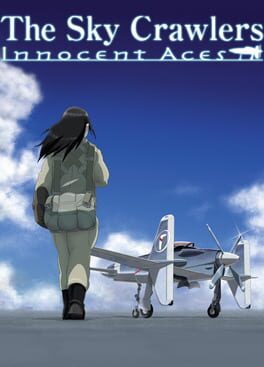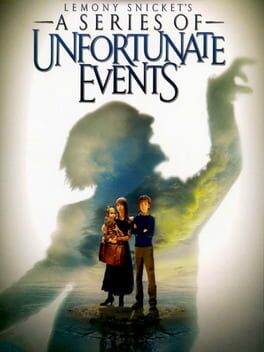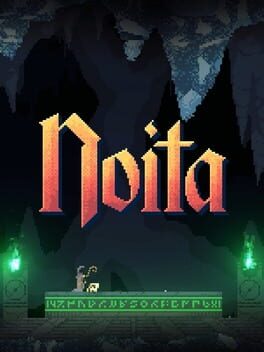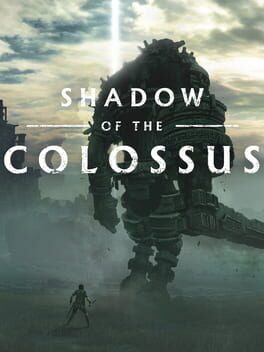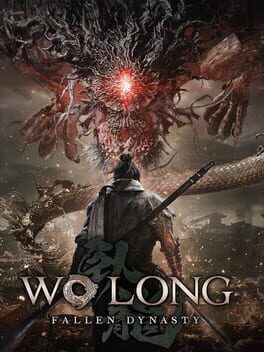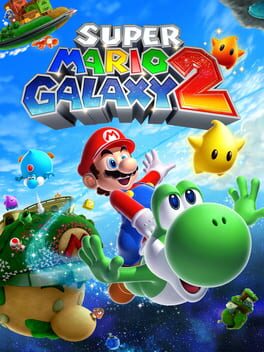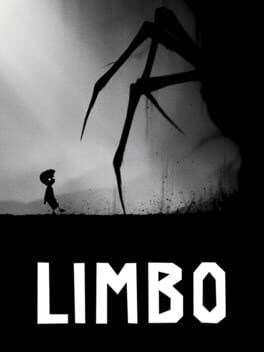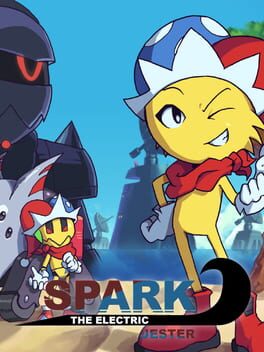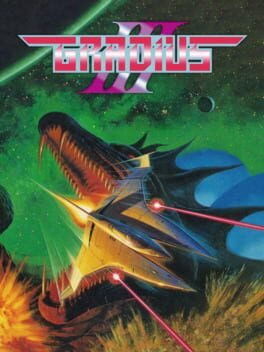ThruLidlessEye
"Why are we here? No reason, just nostalgia, I suppose."
I've said before, only half joking, that the Wii only has about 5 good games. I still believe it has a weak library overall but I will at least admit it must surely have some hidden gems, but they are WELL hidden. As it was released in North America, Innocent Aces is a game absolutely terrified of telling you what it is. I think it's the earliest released game that I own that has a reversible sleeve; the US retail package features different artwork from any other region, making it look exactly like every other flight game on this system. A side effect of the Wii's reputation for being a "casual" console is that not only are traditional "hardcore" games fewer in number, but for the sake of marketability they are made to resemble their competition as much as possible. The only real hints as to the true nature of the game are the fact that it was published by Xseed, and that savvy enthusiasts might recognize that the aircraft on the box is like no plane in the real world. It is otherwise indistinguishable (at least, on the surface) from games like Blazing Angels, Heatseekers, or WWII Aces.
The Sky Crawlers: Innocent Aces is an Ace Combat spinoff made as a tie-in for an anime film directed by Mamoru Oshii. In the movie, in an alternate history setting, wars are now waged by the Rostock and Lautern corporations as spectacle. The combatants in their live-fire engagements are Kildren, genetically engineered ageless child soldiers. Nobody ever wins, nobody ever can win. There's a legend on the battlefield that somewhere in the sky is a plane with a black wildcat on its nose, piloted by the only adult man still in active duty. Sometimes some poor kid leaves the fight to try and be the one to take the man down, but nobody even comes close. It is implied that in Innocent Aces, you play as that very man in his younger years, just as Rostock starts making the switch to test-tube babies.
The presentation of the game is quite striking. In the post-mission rundown, the paths of all planes, friend and foe, are traced through the sky as red and blue ribbons. Many levels feature large environmental setpieces, a city, a volcano, a castle. Once in a while between missions you'll be treated to anime cutscenes done by Production I.G. The soundtrack is excellent, the mission briefing and debriefing tracks stand out as particularly memorable.
I was initially a bit disappointed with the weapon selection compared to Ace Combat, but that was before I understood how to use "Tactical Maneuver Commands". If you stay within close range of an enemy for a short time, you'll start filling a gauge at the bottom of the screen. Once it fills up enough, you'll be able to execute various scripted motions with a single button press that will automatically align your plane for a perfect shot. It's somewhere between the movement capabilities of Sonic's lightspeed dash and the Doomslayer's glory kills. It's very satisfying to be able to charge headfirst into a swarm of enemies, and once you've safely closed the gap, pick them off one-by-one with ease.
As you might expect with a Wii game, the controls can be an issue. While you can use a traditional controller (Classic Controller/Pro or Gamecube), it comes with some hiccups. The tutorial only teaches you how to play with the default control scheme, the remote and nunchuck. Not only are the button configurations so different between control types that you'll need to learn them yourself or consult the manual, many tutorials are actually impossible to complete with a standard gamepad because the fire button on gamepad is also the skip tutorial button. The controls are also simplified compared to typical Ace Combat fare, and while there is an "expert" mode meant to reimplement this, it puts yaw control on the D-pad meaning you'll need to use a left-hand claw grip if you want parity with the level of control you have in mainline games.
I played through the game with a Classic Controller Pro but I replayed the first few stages with motion controls out of curiosity; if nothing else, it was somewhat illuminating. For one thing, it all but confirmed my suspicion that the "Tactical Maneuvers" were a band-aid fix for how difficult it is to play with motion controls (though these moves are, perhaps accidentally, fun enough that I don't care). The motion controls are terrible. You move and aim with the nunchuck. Not the nunchuck's joystick, mind you, that would make too much sense. No, you move and aim, the most important gameplay functions of any flight combat game, using the nunchuck's motion sensor. When playing the game using the Classic Controller I sometimes found the controls to be over-sensitive, with small corrections requiring unusually subtle joystick movement. I now suspect that this is a side-effect of the nunchuck's limitations.
The game's pacing is excellent. Craft restrictions are introduced with a mission where you must use a poorly handling stealth plane to take pictures of enemy structures, and once fights break out at the end of the mission it's almost impossible to land a shot without using your TMC's. The very next mission limits the player instead to what it easily the most maneuverable plane yet. Some later missions require you to carefully regulate your speed, or navigate heavy wind currents. Even at their most challenging, straightforward air-to-air combat missions offer a breath of fresh air.
Aside from the controls, the most frustrating aspect of The Sky Crawlers is that even after playing the game and watching the movie I feel like I've still only seen too small a sliver of this world. We don't see much of what goes on outside of the battlefield, the newscasts, the bars, bowling alleys, and brothels near the bases. When we do get a glimpse into the lives of civilians in this world, they might sigh, they might slouch and stare out into the horizon, but they don't say anything. What do they think? What goes on in this world, who needs this war and why? Maybe the novels go deeper into this, but they're only available digitally and I've heard mixed things about their translation.
I've said before, only half joking, that the Wii only has about 5 good games. I still believe it has a weak library overall but I will at least admit it must surely have some hidden gems, but they are WELL hidden. As it was released in North America, Innocent Aces is a game absolutely terrified of telling you what it is. I think it's the earliest released game that I own that has a reversible sleeve; the US retail package features different artwork from any other region, making it look exactly like every other flight game on this system. A side effect of the Wii's reputation for being a "casual" console is that not only are traditional "hardcore" games fewer in number, but for the sake of marketability they are made to resemble their competition as much as possible. The only real hints as to the true nature of the game are the fact that it was published by Xseed, and that savvy enthusiasts might recognize that the aircraft on the box is like no plane in the real world. It is otherwise indistinguishable (at least, on the surface) from games like Blazing Angels, Heatseekers, or WWII Aces.
The Sky Crawlers: Innocent Aces is an Ace Combat spinoff made as a tie-in for an anime film directed by Mamoru Oshii. In the movie, in an alternate history setting, wars are now waged by the Rostock and Lautern corporations as spectacle. The combatants in their live-fire engagements are Kildren, genetically engineered ageless child soldiers. Nobody ever wins, nobody ever can win. There's a legend on the battlefield that somewhere in the sky is a plane with a black wildcat on its nose, piloted by the only adult man still in active duty. Sometimes some poor kid leaves the fight to try and be the one to take the man down, but nobody even comes close. It is implied that in Innocent Aces, you play as that very man in his younger years, just as Rostock starts making the switch to test-tube babies.
The presentation of the game is quite striking. In the post-mission rundown, the paths of all planes, friend and foe, are traced through the sky as red and blue ribbons. Many levels feature large environmental setpieces, a city, a volcano, a castle. Once in a while between missions you'll be treated to anime cutscenes done by Production I.G. The soundtrack is excellent, the mission briefing and debriefing tracks stand out as particularly memorable.
I was initially a bit disappointed with the weapon selection compared to Ace Combat, but that was before I understood how to use "Tactical Maneuver Commands". If you stay within close range of an enemy for a short time, you'll start filling a gauge at the bottom of the screen. Once it fills up enough, you'll be able to execute various scripted motions with a single button press that will automatically align your plane for a perfect shot. It's somewhere between the movement capabilities of Sonic's lightspeed dash and the Doomslayer's glory kills. It's very satisfying to be able to charge headfirst into a swarm of enemies, and once you've safely closed the gap, pick them off one-by-one with ease.
As you might expect with a Wii game, the controls can be an issue. While you can use a traditional controller (Classic Controller/Pro or Gamecube), it comes with some hiccups. The tutorial only teaches you how to play with the default control scheme, the remote and nunchuck. Not only are the button configurations so different between control types that you'll need to learn them yourself or consult the manual, many tutorials are actually impossible to complete with a standard gamepad because the fire button on gamepad is also the skip tutorial button. The controls are also simplified compared to typical Ace Combat fare, and while there is an "expert" mode meant to reimplement this, it puts yaw control on the D-pad meaning you'll need to use a left-hand claw grip if you want parity with the level of control you have in mainline games.
I played through the game with a Classic Controller Pro but I replayed the first few stages with motion controls out of curiosity; if nothing else, it was somewhat illuminating. For one thing, it all but confirmed my suspicion that the "Tactical Maneuvers" were a band-aid fix for how difficult it is to play with motion controls (though these moves are, perhaps accidentally, fun enough that I don't care). The motion controls are terrible. You move and aim with the nunchuck. Not the nunchuck's joystick, mind you, that would make too much sense. No, you move and aim, the most important gameplay functions of any flight combat game, using the nunchuck's motion sensor. When playing the game using the Classic Controller I sometimes found the controls to be over-sensitive, with small corrections requiring unusually subtle joystick movement. I now suspect that this is a side-effect of the nunchuck's limitations.
The game's pacing is excellent. Craft restrictions are introduced with a mission where you must use a poorly handling stealth plane to take pictures of enemy structures, and once fights break out at the end of the mission it's almost impossible to land a shot without using your TMC's. The very next mission limits the player instead to what it easily the most maneuverable plane yet. Some later missions require you to carefully regulate your speed, or navigate heavy wind currents. Even at their most challenging, straightforward air-to-air combat missions offer a breath of fresh air.
Aside from the controls, the most frustrating aspect of The Sky Crawlers is that even after playing the game and watching the movie I feel like I've still only seen too small a sliver of this world. We don't see much of what goes on outside of the battlefield, the newscasts, the bars, bowling alleys, and brothels near the bases. When we do get a glimpse into the lives of civilians in this world, they might sigh, they might slouch and stare out into the horizon, but they don't say anything. What do they think? What goes on in this world, who needs this war and why? Maybe the novels go deeper into this, but they're only available digitally and I've heard mixed things about their translation.
1996
What does it mean to "play" a video game?
Do we play a role within the game, as an actor? Do we play it as we do a movie, and experience it as an audience? Do we play a sport on the screen, as a competitor? Depending on the game, depending on individual taste, any number of answers ring more true than the next, but I know what is most valuable to me.
The best video games are "played" in the same way that one "plays" a song.
Super Mario 64 is the first video game I played as a kid, and if it is not still my favorite game today, it is the scale by which my favorite game will be judged.
A video game controller, like a musical instrument, is on its own little more than a strange contraption with no visually apparent practical use (perhaps especially for the Nintendo 64 controller). It is only through use of the object, following a set of instructions, that the beauty of the thing becomes clear. A video game, like a song, must be learned.
Only three notes make up the swirling improvised harmonies of Super Mario 64's composition; three buttons, the function of which could be summarily described by the verbs "Ascend", "Descend", and "Lunge". Following a burst of upward momentum the player could effortlessly transfer this kinetic energy into a forward dive. One action leads into another seamlessly; Super Mario 64 is a platformer with the combo variety and tight precision of a character action game.
Super Mario 64 transforms the controller into rhythmic percussion. A flick of the stick, the thumb tapdancing atop the A and B buttons. Mario shouts with delight as coins jingle and his enemies grunt and squeal. Like a free jazz, it is hectic, it is also under control.
And like free jazz, it is endlessly improvisational. From every instant that the player decides their movement, to the traversal of the stage, to the gradual uncovering of the castle's many paths, the player is constantly making choices on every possible level. The game only requires any combination of little more than half of its objectives to be cleared in order to see the end; what any individual has difficulty with can be passed over, and onto the next.
The levels both possess within themselves an apparent Dark Souls-ian spiral of interweaving paths, and contain unseen swooping one man rollercoasters which the player is left to carve for themselves. Many objectives simply exist as an object in the world, they can be collected in order as the game doles out hints, or collected at anytime an experienced player wishes. They can be collected by an intended exploration of a winding obstacle course, or the intended route can often be circumvented by a flashy display of electronic acrobatic prowess.
Super Mario 64 is not escapism, its plot is irrelevant, its world is made up of incongruous chunks accessed through painted interdimensional gateways. It can be played competitively, but it doesn't have to be. Not every song is an endless operatic epic, not everyone who picks up an instrument is a star or virtuoso. Why does the everyman play an instrument? To busk for change? In hopes that they will someday be recognized as genius? Maybe, but in the face of a lack of either meaningful monetary gain or critical approval, why does a normal person play a song for only themselves?
Perhaps because the actions, in and of themselves, are satisfying.
Do we play a role within the game, as an actor? Do we play it as we do a movie, and experience it as an audience? Do we play a sport on the screen, as a competitor? Depending on the game, depending on individual taste, any number of answers ring more true than the next, but I know what is most valuable to me.
The best video games are "played" in the same way that one "plays" a song.
Super Mario 64 is the first video game I played as a kid, and if it is not still my favorite game today, it is the scale by which my favorite game will be judged.
A video game controller, like a musical instrument, is on its own little more than a strange contraption with no visually apparent practical use (perhaps especially for the Nintendo 64 controller). It is only through use of the object, following a set of instructions, that the beauty of the thing becomes clear. A video game, like a song, must be learned.
Only three notes make up the swirling improvised harmonies of Super Mario 64's composition; three buttons, the function of which could be summarily described by the verbs "Ascend", "Descend", and "Lunge". Following a burst of upward momentum the player could effortlessly transfer this kinetic energy into a forward dive. One action leads into another seamlessly; Super Mario 64 is a platformer with the combo variety and tight precision of a character action game.
Super Mario 64 transforms the controller into rhythmic percussion. A flick of the stick, the thumb tapdancing atop the A and B buttons. Mario shouts with delight as coins jingle and his enemies grunt and squeal. Like a free jazz, it is hectic, it is also under control.
And like free jazz, it is endlessly improvisational. From every instant that the player decides their movement, to the traversal of the stage, to the gradual uncovering of the castle's many paths, the player is constantly making choices on every possible level. The game only requires any combination of little more than half of its objectives to be cleared in order to see the end; what any individual has difficulty with can be passed over, and onto the next.
The levels both possess within themselves an apparent Dark Souls-ian spiral of interweaving paths, and contain unseen swooping one man rollercoasters which the player is left to carve for themselves. Many objectives simply exist as an object in the world, they can be collected in order as the game doles out hints, or collected at anytime an experienced player wishes. They can be collected by an intended exploration of a winding obstacle course, or the intended route can often be circumvented by a flashy display of electronic acrobatic prowess.
Super Mario 64 is not escapism, its plot is irrelevant, its world is made up of incongruous chunks accessed through painted interdimensional gateways. It can be played competitively, but it doesn't have to be. Not every song is an endless operatic epic, not everyone who picks up an instrument is a star or virtuoso. Why does the everyman play an instrument? To busk for change? In hopes that they will someday be recognized as genius? Maybe, but in the face of a lack of either meaningful monetary gain or critical approval, why does a normal person play a song for only themselves?
Perhaps because the actions, in and of themselves, are satisfying.
2022
It could have been a fine, if straightforward, retro-inspired throwback, or perhaps even a memorable adventure game. Instead it's weirdly action oriented and surprisingly modern, trendy in ways that do it no favors. The fictional language barrier and in-game instruction booklet are the most interesting ideas that game has, but it doesn't lean far enough into these aspects, they're too secondary to the actual play experience. And unfortunately the act of playing the game is itself totally unsatisfying, completely lacking the tight, tactile punch of the games it's so nakedly inspired by. Its audiovisual aesthetic is inoffensive in a way that makes it feel less like an actual video game and more like a graphic for a youtube channel's title card or in-store advertising. I wish it had either been more focused in its original elements, or more brazen in being an obvious rip-off, but sitting somewhere in between the two it just rings hollow.
Lemony Snicket's A Series of Unfortunate Events for the Game Boy Advance is a game so forgotten that my casual playthrough became the world record speedrun by default, and it doesn't really deserve better.
The game is not completely without charm. The soundtrack is actually kind of just plain good. This is definitely not the ugliest game on the system. There are a number of hidden secrets and collectables to keep a small-brained child amused.
The game performs terribly, there are a lot of moments where there are just too many sprites on screen and the frame-rate gets really choppy.
The structure of the game is mostly fetch quests for items in what amounts to a game-length trading sequence.
The core gameplay is focused on sluggish platforming, a projectile weapon with a less-than-ideal arc, a short range damage-over-time water gun, and a rolling attack that makes you invulnerable but has too long of a cool-down for it to be viable against anything that doesn't die in one hit. When interacting with people, doors, items, etc. you have to navigate a menu that would not be out of place in an old-school PC adventure game.
The puzzles in the game are also right out of those kinds of games, frequently relying on the kind of absurd "adventure game logic" that will have you consulting a walkthrough more frequently than you would like. Sometimes seemingly arbitrary elements of the game will allow you to progress, without giving you any indicator that a new path has become available.
Lemony Snicket's A Series of Unfortunate Events for the Game Boy Advance is so unfun to play that I wonder if that's the point, it would be thematically appropriate for the work it is adapting.
The game is not completely without charm. The soundtrack is actually kind of just plain good. This is definitely not the ugliest game on the system. There are a number of hidden secrets and collectables to keep a small-brained child amused.
The game performs terribly, there are a lot of moments where there are just too many sprites on screen and the frame-rate gets really choppy.
The structure of the game is mostly fetch quests for items in what amounts to a game-length trading sequence.
The core gameplay is focused on sluggish platforming, a projectile weapon with a less-than-ideal arc, a short range damage-over-time water gun, and a rolling attack that makes you invulnerable but has too long of a cool-down for it to be viable against anything that doesn't die in one hit. When interacting with people, doors, items, etc. you have to navigate a menu that would not be out of place in an old-school PC adventure game.
The puzzles in the game are also right out of those kinds of games, frequently relying on the kind of absurd "adventure game logic" that will have you consulting a walkthrough more frequently than you would like. Sometimes seemingly arbitrary elements of the game will allow you to progress, without giving you any indicator that a new path has become available.
Lemony Snicket's A Series of Unfortunate Events for the Game Boy Advance is so unfun to play that I wonder if that's the point, it would be thematically appropriate for the work it is adapting.
2020
2009
The PS3 may not have games, but it does have a game.
Perhaps even more so than Dark Souls, Demon's Souls' NPCs absolutely ooze charm. Their disparate outlooks on the worlds and events, their attitudes ranging from begrudging conscientiousness to friendly rudeness to completely earnest warmth. The world and story have an openness, a simplicity to them that lacks the esoteric feel that many From games have, but it's effective, the themes are strong.
While much of the game's action takes place in dingy underground or indoor areas, Boletaria in particular shows off a sense of scale quite uncommon in these earlier Souls games. Long winding bridges and sprawling courtyards the likes of which we would scarcely see through the next decade of From Software games, and certainly not with this enemy density. Environments do lack the subtle, jutting imperfections and surface details of more recent post-apocalypses, with a lot of flat level geometry and simple, low-poly objects. Aside from situations where the physics engine gets pushed too hard, performance is generally acceptable. Maybe it's just because developers like Nintendo are still putting out sub-HD games, but Demon's Souls on PS3 frankly still looks quite modern, and often flat out good.
Generally speaking the player is able to take many more hits than in future games in this style, but while it could be described as easier it is also probably the most punishing out of all of these games. Dying can do all kinds of things: it can take away your points, it can cut your health bar in half, it can ruin a side-quest, it can make an area inaccessible. The great punishment for death means that while sloppier play may be acceptable, slower, more cautious navigation is borderline mandatory, especially considering the lack of methods to mitigate stagger (which would only be implemented in future games). Perhaps most discouraging of all is the fact that the only checkpoints you will ever get in these relatively large levels are those that appear when you kill a boss. This, in conjunction with the typically plodding pace of exploration, means that a death will negate all progress since your last major obstacle, potentially as much as 20 minutes or more of careful play made worse than completely unproductive.
I said that the player generally takes less damage per swing but I must stress that word here. Magic is well known to be a powerful force in this game, and that goes for the enemies as well as the player. A melee hit might barely do 10% of your health bar, a projectile spell can be expected to knock out at least half of your hit points in a single shot. With only level 16 in the relevant stats, my most basic casting option already did more damage than a longsword that I had upgraded five times. Magic aside, even melee hits can be disastrous when dealing with groups, as the game presents no meaningful solution to getting stun-locked.
Whatever issues I may take with the levels, the bosses are only ever worse, putting the game's shortcomings on full display. Demon's Souls is, unfortunately, a game focused almost entirely on combat, and whether you want to view Demon's Souls as being primarily a Role Playing Game or an Action Game, that combat is simply not anything to write home about. As an RPG, Demon's Souls suffers from the same problem as Final Fantasy XV; as long as you've bought enough healing items, anything is possible. If you view Demon's Souls as an action game (which several encounters will force you to do), you will find the player's toolset lacking, and the animations stiff.
One element that keeps me coming back to Dark Souls III more than From's other games is that there is not a single level in that game that I truly dread; it doesn't have a Lost Izalith or a Shrine of Amana. It has nothing that I look at and wonder if it will sour my playthrough. The combined high price of failure (measurable in time, resources, and options) and often plain cruel encounter design mean that virtually every single level in Demon's Souls is one that I dread as deeply as any of the later games' worst duds. I find myself sitting in the Nexus with a negativist choice paralysis. While some might find this thematically appropriate, I find that it just makes me want to turn the game off. Attempting to beat Demon's Souls is something that I've been doing on a roughly three year cycle since I first played it. I have reached King Allant once before, but I have never yet beaten the game.
It wouldn't be false to say that virtually every major From release since has been something of a reinterpretation of this game's ideas. It's a tired and memetic sentiment at this point, but it's true: it is still amazing how much they got right on the first try (some will argue this isn't the "first" and point towards their earlier first person fantasy games but I don't see much reason to dwell on that comparison). Demon's Souls is a game with a lot of excellent ideas, though it features a wide gulf of varying levels of execution. It is absolutely worth playing, but I could never blame anybody for bouncing off of it.
Perhaps even more so than Dark Souls, Demon's Souls' NPCs absolutely ooze charm. Their disparate outlooks on the worlds and events, their attitudes ranging from begrudging conscientiousness to friendly rudeness to completely earnest warmth. The world and story have an openness, a simplicity to them that lacks the esoteric feel that many From games have, but it's effective, the themes are strong.
While much of the game's action takes place in dingy underground or indoor areas, Boletaria in particular shows off a sense of scale quite uncommon in these earlier Souls games. Long winding bridges and sprawling courtyards the likes of which we would scarcely see through the next decade of From Software games, and certainly not with this enemy density. Environments do lack the subtle, jutting imperfections and surface details of more recent post-apocalypses, with a lot of flat level geometry and simple, low-poly objects. Aside from situations where the physics engine gets pushed too hard, performance is generally acceptable. Maybe it's just because developers like Nintendo are still putting out sub-HD games, but Demon's Souls on PS3 frankly still looks quite modern, and often flat out good.
Generally speaking the player is able to take many more hits than in future games in this style, but while it could be described as easier it is also probably the most punishing out of all of these games. Dying can do all kinds of things: it can take away your points, it can cut your health bar in half, it can ruin a side-quest, it can make an area inaccessible. The great punishment for death means that while sloppier play may be acceptable, slower, more cautious navigation is borderline mandatory, especially considering the lack of methods to mitigate stagger (which would only be implemented in future games). Perhaps most discouraging of all is the fact that the only checkpoints you will ever get in these relatively large levels are those that appear when you kill a boss. This, in conjunction with the typically plodding pace of exploration, means that a death will negate all progress since your last major obstacle, potentially as much as 20 minutes or more of careful play made worse than completely unproductive.
I said that the player generally takes less damage per swing but I must stress that word here. Magic is well known to be a powerful force in this game, and that goes for the enemies as well as the player. A melee hit might barely do 10% of your health bar, a projectile spell can be expected to knock out at least half of your hit points in a single shot. With only level 16 in the relevant stats, my most basic casting option already did more damage than a longsword that I had upgraded five times. Magic aside, even melee hits can be disastrous when dealing with groups, as the game presents no meaningful solution to getting stun-locked.
Whatever issues I may take with the levels, the bosses are only ever worse, putting the game's shortcomings on full display. Demon's Souls is, unfortunately, a game focused almost entirely on combat, and whether you want to view Demon's Souls as being primarily a Role Playing Game or an Action Game, that combat is simply not anything to write home about. As an RPG, Demon's Souls suffers from the same problem as Final Fantasy XV; as long as you've bought enough healing items, anything is possible. If you view Demon's Souls as an action game (which several encounters will force you to do), you will find the player's toolset lacking, and the animations stiff.
One element that keeps me coming back to Dark Souls III more than From's other games is that there is not a single level in that game that I truly dread; it doesn't have a Lost Izalith or a Shrine of Amana. It has nothing that I look at and wonder if it will sour my playthrough. The combined high price of failure (measurable in time, resources, and options) and often plain cruel encounter design mean that virtually every single level in Demon's Souls is one that I dread as deeply as any of the later games' worst duds. I find myself sitting in the Nexus with a negativist choice paralysis. While some might find this thematically appropriate, I find that it just makes me want to turn the game off. Attempting to beat Demon's Souls is something that I've been doing on a roughly three year cycle since I first played it. I have reached King Allant once before, but I have never yet beaten the game.
It wouldn't be false to say that virtually every major From release since has been something of a reinterpretation of this game's ideas. It's a tired and memetic sentiment at this point, but it's true: it is still amazing how much they got right on the first try (some will argue this isn't the "first" and point towards their earlier first person fantasy games but I don't see much reason to dwell on that comparison). Demon's Souls is a game with a lot of excellent ideas, though it features a wide gulf of varying levels of execution. It is absolutely worth playing, but I could never blame anybody for bouncing off of it.
Incredible that such a mediocre game ruined a generation of games criticism.
A dead simple fairytale told in the most plodding and bloated possible way. The camera hangs on nothing, the characters talk in a fictional language about things that the player could easily infer if the game had any respect for their intelligence. The apparent moral dilemma that endlessly whirls around discussions of the game is so weak that I don't understand how it seemingly not only defined this game, but for more than a decade defined the height of artfulness that video games could possibly aspire to in the eyes of a certain type of disillusioned game-liker.
The game world is appealing and its scale is sprawling, but it is completely empty and the game will always lead you to the next objective, each of which must be completed in linear sequence. The controls are unresponsive, the encounters are joyless; to be fair there is at least some argument that this is in support of the narrative, but why then tack on such gamey additions as a time attack mode? Why draw attention to the game's tedium by presenting it out of context?
It may just be because my first exposure to Shadow of the Colossus was in the form of a tech demo recreation of one of the game's scenes as a student project over a decade ago, but I don't find the remake to be any particular artistic travesty. To me the audiovisual experience of the original already seems like a ridiculous cacophony of base themes explored in plenty of games predating this one by a decade or more. I have been trying to give this a proper chance on a more or less annual basis, and I have bounced off of it every time.
A dead simple fairytale told in the most plodding and bloated possible way. The camera hangs on nothing, the characters talk in a fictional language about things that the player could easily infer if the game had any respect for their intelligence. The apparent moral dilemma that endlessly whirls around discussions of the game is so weak that I don't understand how it seemingly not only defined this game, but for more than a decade defined the height of artfulness that video games could possibly aspire to in the eyes of a certain type of disillusioned game-liker.
The game world is appealing and its scale is sprawling, but it is completely empty and the game will always lead you to the next objective, each of which must be completed in linear sequence. The controls are unresponsive, the encounters are joyless; to be fair there is at least some argument that this is in support of the narrative, but why then tack on such gamey additions as a time attack mode? Why draw attention to the game's tedium by presenting it out of context?
It may just be because my first exposure to Shadow of the Colossus was in the form of a tech demo recreation of one of the game's scenes as a student project over a decade ago, but I don't find the remake to be any particular artistic travesty. To me the audiovisual experience of the original already seems like a ridiculous cacophony of base themes explored in plenty of games predating this one by a decade or more. I have been trying to give this a proper chance on a more or less annual basis, and I have bounced off of it every time.
2010
The only 3D Mario I haven't beaten, though I swear I'm getting close; I think I've seen enough to give thoughts.
Whenever you beat a level in SMG2, the game shows your time in the corner of the screen. It doesn't have much fanfare, it doesn't seem like it's there for competitive purposes. It's rather utilitarian, like it was a development tool left in the final build because, well, I'm sure some players will want to know how long they took. Every time I played through one of the main platforming levels (i.e. anything that wasn't a prankster comet or chimp challenge) the same number kept coming up. Seven minutes, every time.
The game's main levels are incredibly well put together, and ridiculously well paced. Just like the original Galaxy they focus mostly on unique set-pieces, power ups, or motion control elements that aren't part of Mario's standard moveset, but everything feels much more well thought out. Unfortunately you'll of course regularly hit blocks where in order to progress you'll have to do something other than these big setpieces.
The original Galaxy felt like it didn't need to be a Mario game, like Mario's core mechanics were so secondary to each level's new gameplay element that it could have starred any character, or been the first game in a completely new franchise. Galaxy 2 doesn't want you to forget for a second that this is a Mario game, and this doesn't do it any favors. It brings back old characters, levels, and music tracks, both from Galaxy 1 and from across the Mario franchise, but it forgets to have any meaningful personality of its own. It tries to have more difficult platforming sections, but Mario's range of abilities isn't wide enough nor the game's controls precise enough for these parts to feel satisfying.
It's a generally appealing game but it has little you won't have seen before from this series, and it oscillates wildly between being a laid back, chill experience, and a frustrating chore.
Whenever you beat a level in SMG2, the game shows your time in the corner of the screen. It doesn't have much fanfare, it doesn't seem like it's there for competitive purposes. It's rather utilitarian, like it was a development tool left in the final build because, well, I'm sure some players will want to know how long they took. Every time I played through one of the main platforming levels (i.e. anything that wasn't a prankster comet or chimp challenge) the same number kept coming up. Seven minutes, every time.
The game's main levels are incredibly well put together, and ridiculously well paced. Just like the original Galaxy they focus mostly on unique set-pieces, power ups, or motion control elements that aren't part of Mario's standard moveset, but everything feels much more well thought out. Unfortunately you'll of course regularly hit blocks where in order to progress you'll have to do something other than these big setpieces.
The original Galaxy felt like it didn't need to be a Mario game, like Mario's core mechanics were so secondary to each level's new gameplay element that it could have starred any character, or been the first game in a completely new franchise. Galaxy 2 doesn't want you to forget for a second that this is a Mario game, and this doesn't do it any favors. It brings back old characters, levels, and music tracks, both from Galaxy 1 and from across the Mario franchise, but it forgets to have any meaningful personality of its own. It tries to have more difficult platforming sections, but Mario's range of abilities isn't wide enough nor the game's controls precise enough for these parts to feel satisfying.
It's a generally appealing game but it has little you won't have seen before from this series, and it oscillates wildly between being a laid back, chill experience, and a frustrating chore.
2010
TBD
This has been out for months, I've had it sitting on my taskbar for about as long as that, waiting for a good day, and that day was today. I appreciate the virtual museum concept, it's much more engaging than if I had just looked at an artist's pictures on a social media timeline, or a video on a youtube channel, or if the small interactive pieces were tiny individual applications. It has the sense of a real place, a gathering, it reminds me of going to student film festivals.
This page should probably be removed or combined with Gunple: Gunman's Proof. I don't know how that works though.
It's Strange World: Gunman's Proof is a cowboys and aliens themed Legend of Zelda clone with Smash TV combat, Contra weapon power-ups, and a treasure collecting score system straight out Kirby Super Star's The Great Cave Offensive.
The game is extremely easy, not only because of how frequently it doles out new abilities and permanent upgrades to your base equipment, but also because almost none of the enemies can shoot diagonally. The few enemies that do shoot diagonally can't really aim, they just fire in random directions (or all directions at once). The player, on the other hand, can shoot diagonally while moving, and pretty much nothing in the game really knows how to react to this. From start to finish, this is the winning technique. Though I will say, even if the game is consistently not much of a challenge, it is also consistently quite fun.
The soundtrack is fantastic. The village theme (which will greet you at the start of each play session) is chill, whistling elevator music. The overworld themes serve as excellent background for galloping across the landscape, and the theme that plays while you ride your donkey is joyful without being overly bombastic. The dramatic theme that plays during certain cutscenes carries all the weight of more classic themes from the game's contemporaries.
The game's characters, in terms of animation and dialogue, are charming in a way similar to Earthbound. The main character is basically the town failson until he's possessed by an alien at the start of the game, becoming the only fighter in town competent enough to face the Demiseeds. By around the halfway mark of the game, some of the townspeople start to wonder if something's the matter with you, while your dad (who kicks you out of the house at the start of the game) claims to have always known you were destined for greatness. The main character is extremely well animated, with smooth animations for 8-direction walking, shooting, crawling, punching, not to mention all of the little poses he does when finding treasure or interacting with other characters.
I'm gonna talk about the racism.
So, a lot of the enemies in Gunman's Proof are typical video game fare, giant bugs, slime monsters, etc. But a common enemy, probably the first one that the player will see, is basically a cowboy golliwog. Now, in this wild west themed island setting, the heroes are obviously colonial settlers. The enemies are the native people and wildlife of this "new" land, and killing them is justified by the fact that they are all possessed by a space alien. Yet, in order to defeat them, the hero too must carry this same otherworldly spirit.
The townspeople are obviously an invading force, but they project their alien nature onto those who were there before them. It's a strange world, but it can be made normal. In the end, with the alien defeated, so too can the alien be expelled from our hero's body, and everything will retvrn to the way it ought to be.
When you defeat an insect in this game, you don't kill it. It just turns back into a normal insect.
When you defeat a late-game boss consisting of two twin sisters, they don't die, they regain consciousness and remark on how exotic their attire is.
When you defeat a wild west Mr. Popo, nothing remains.
It sucks. It's a pretty substantial blemish on an otherwise really charming game.
Gunman's Proof is a fairly short game, if you want it to be. You can beat it in a couple hours or so. I would recommend taking it slow, play one or two dungeons each session. Talk to all the NPCs, they usually have something new to say. Explore around and find any health upgrades or new moves you might have missed.
It's speculated that the reason this game is as short as it is, is because it wasn't really finished. It was the last game developed by Lenar, and it doesn't even have an end credits sequence, nor could I find that information online. If you try to open a chest while riding your donkey, you get a text box that specifically says
"You can't open chests while riding Robaton. We're real sorry, honest."
Edit: 3/16/24
I do think perhaps as others have pointed out that the racist aspects of the game are sort of blown out of of proportion in discussion of it, and I want to make it clear that in accusing the game of having racist imagery or colonialist themes that I don't think the game is truly worth condemning or erasing. This review was originally written as a sort of companion piece to a review of Resident Evil 5 that I never finished because I never finished playing the game either, because that game isn't very good. The point though, was that Resident Evil 5 is, perhaps on accident, a very valuable work of fiction in the same way that something like those WWII era cartoons. It shows the exact kind of post-9/11 hysteria that was going on in the minds of most of the first world at the time, and the virus and bioweapons serve as an effective symbol of how wartime propaganda is used to paint civilians as equivalent to combatants. In the same way, I think a game that makes the undertones of games that encourage the player to plunder and conquer a space in the name of ousting an outsider more literal and surface level is interesting. Plus, even if we assume that those pixels on the screen aren't meant to have a golliwog-esque appearance, it's not like such images were unheard of in Japanese games from this time, and it's not unreasonable to assume that's what your looking at.
It's Strange World: Gunman's Proof is a cowboys and aliens themed Legend of Zelda clone with Smash TV combat, Contra weapon power-ups, and a treasure collecting score system straight out Kirby Super Star's The Great Cave Offensive.
The game is extremely easy, not only because of how frequently it doles out new abilities and permanent upgrades to your base equipment, but also because almost none of the enemies can shoot diagonally. The few enemies that do shoot diagonally can't really aim, they just fire in random directions (or all directions at once). The player, on the other hand, can shoot diagonally while moving, and pretty much nothing in the game really knows how to react to this. From start to finish, this is the winning technique. Though I will say, even if the game is consistently not much of a challenge, it is also consistently quite fun.
The soundtrack is fantastic. The village theme (which will greet you at the start of each play session) is chill, whistling elevator music. The overworld themes serve as excellent background for galloping across the landscape, and the theme that plays while you ride your donkey is joyful without being overly bombastic. The dramatic theme that plays during certain cutscenes carries all the weight of more classic themes from the game's contemporaries.
The game's characters, in terms of animation and dialogue, are charming in a way similar to Earthbound. The main character is basically the town failson until he's possessed by an alien at the start of the game, becoming the only fighter in town competent enough to face the Demiseeds. By around the halfway mark of the game, some of the townspeople start to wonder if something's the matter with you, while your dad (who kicks you out of the house at the start of the game) claims to have always known you were destined for greatness. The main character is extremely well animated, with smooth animations for 8-direction walking, shooting, crawling, punching, not to mention all of the little poses he does when finding treasure or interacting with other characters.
I'm gonna talk about the racism.
So, a lot of the enemies in Gunman's Proof are typical video game fare, giant bugs, slime monsters, etc. But a common enemy, probably the first one that the player will see, is basically a cowboy golliwog. Now, in this wild west themed island setting, the heroes are obviously colonial settlers. The enemies are the native people and wildlife of this "new" land, and killing them is justified by the fact that they are all possessed by a space alien. Yet, in order to defeat them, the hero too must carry this same otherworldly spirit.
The townspeople are obviously an invading force, but they project their alien nature onto those who were there before them. It's a strange world, but it can be made normal. In the end, with the alien defeated, so too can the alien be expelled from our hero's body, and everything will retvrn to the way it ought to be.
When you defeat an insect in this game, you don't kill it. It just turns back into a normal insect.
When you defeat a late-game boss consisting of two twin sisters, they don't die, they regain consciousness and remark on how exotic their attire is.
When you defeat a wild west Mr. Popo, nothing remains.
It sucks. It's a pretty substantial blemish on an otherwise really charming game.
Gunman's Proof is a fairly short game, if you want it to be. You can beat it in a couple hours or so. I would recommend taking it slow, play one or two dungeons each session. Talk to all the NPCs, they usually have something new to say. Explore around and find any health upgrades or new moves you might have missed.
It's speculated that the reason this game is as short as it is, is because it wasn't really finished. It was the last game developed by Lenar, and it doesn't even have an end credits sequence, nor could I find that information online. If you try to open a chest while riding your donkey, you get a text box that specifically says
"You can't open chests while riding Robaton. We're real sorry, honest."
Edit: 3/16/24
I do think perhaps as others have pointed out that the racist aspects of the game are sort of blown out of of proportion in discussion of it, and I want to make it clear that in accusing the game of having racist imagery or colonialist themes that I don't think the game is truly worth condemning or erasing. This review was originally written as a sort of companion piece to a review of Resident Evil 5 that I never finished because I never finished playing the game either, because that game isn't very good. The point though, was that Resident Evil 5 is, perhaps on accident, a very valuable work of fiction in the same way that something like those WWII era cartoons. It shows the exact kind of post-9/11 hysteria that was going on in the minds of most of the first world at the time, and the virus and bioweapons serve as an effective symbol of how wartime propaganda is used to paint civilians as equivalent to combatants. In the same way, I think a game that makes the undertones of games that encourage the player to plunder and conquer a space in the name of ousting an outsider more literal and surface level is interesting. Plus, even if we assume that those pixels on the screen aren't meant to have a golliwog-esque appearance, it's not like such images were unheard of in Japanese games from this time, and it's not unreasonable to assume that's what your looking at.
1989
